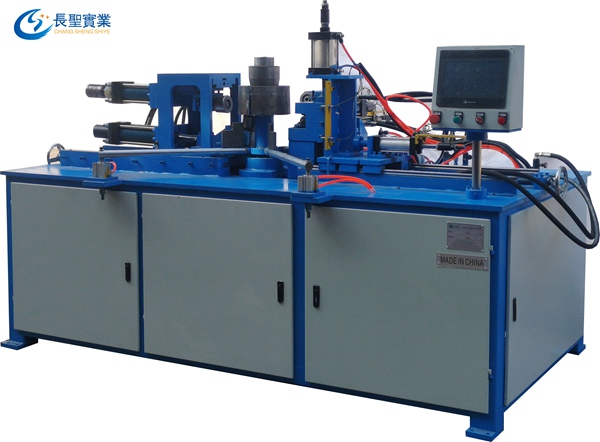
Flanging machines exist in varied types, each of them based on distinct operating principles for the deformation and shaping of metal blanks to meet specific requirements. It is important to understand these kinds as well as their functions when choosing the right machine for a given application.
Rotary Flanging Machines:
Rotary Flanging Machines apply gradually rotating forming dies that deform the edge of a metal blank thus creating flange or lip. The sheet is fed through the machine while the dies rotate, reshaping its edge slowly towards the desired profile. They are versatile in terms of varying width and depth adjustment hence, they can be used in different applications.

Hydraulic Flanging Machines:
Hydraulic Flanging Machines use hydraulic pressure to force metal blanks into a flanged shape or an edge. There are hydraulic cylinders inside these machines that exert controlled pressure on workpiece enabling precise shaping and bending processes. Hydraulic flanging machines are known to handle heavy-duty applications with minimal need for human labor.
Air-Powered Flanging Machines:
The compressed air drives air-powered flanging machines also called pneumatic flangers during flange creation. These equipment possess pneumatic cylinders that push down on the metal plate causing its deformation into a number of profiles such as profiles and grooves. Air-powered flanging machines are desirable because they have settings that can be adjusted quickly allowing them to operate at high speeds during production.
Operating Principles:
Regardless of their specific type, all types of flanging machines have similar working principle that involve gradual deformation of edges of a metal blank thereby creating a lip, profile or even a flange. This machine applies control forces on work piece through rotating forming dies, hydraulic pressure or pneumatic power to attain required shape. For adjustable throat depth, bending capacity and adjustable flange width feature helps operator customize his activities during particular application requirement.
Various kinds exist which each has an own operating principle and features among them. Rotary flanging machines have rotating forming dies, hydraulic flanging machines use hydraulic pressure, and air-powered flanging machines deform metal blanks by using compressed air to create flanges as well as profiles. Understanding the characteristics and capabilities of different types of flanging machines is essential for selecting the most suitable option for specific metal fabrication applications.